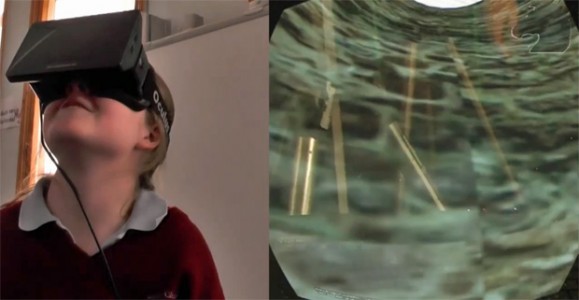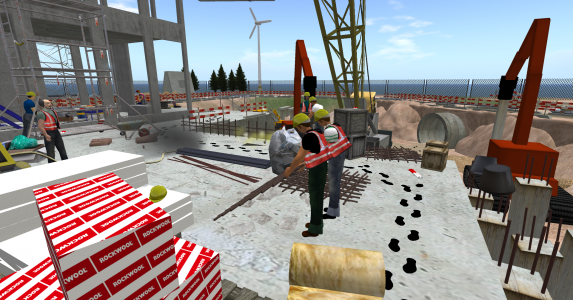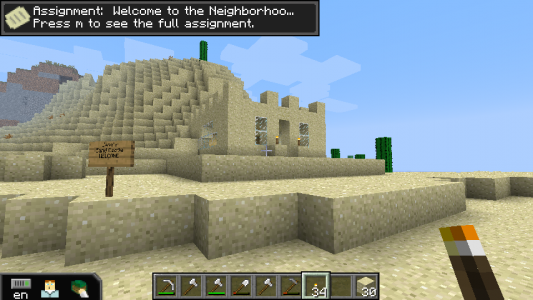Education and technology are interconnected. This synergy is able to transform the world we live in. The contradictory phenomenon is that while being an early adopter of technology, education is also one of the last sectors to be fully transformed by it, due to institutional inertia and a number of other reasons.
Education hasn’t changed for years in terms of teaching approaches and techniques applied. Although we are seeing some innovative variability in this area. Today millennials feel pretty comfortable with online education, doing research on the Internet, resorting to instructional videos on YouTube and distance learning powered by video technology. Obviously, virtual reality is next.
Some virtual reality projects used both in schools and higher educational institutions, are already under way.
We’ve covered before a story about the students in Ireland who recreated a historic place in OpenSim and explored it with an Oculus Rift headset. The project was made possible with the help of MissionV – a platform, that provides Irish schools’ students with tools to build virtual learning environments.

“We are getting ready to take the next step by supporting schools that will invest in head-mounted displays like the Oculus Rift,†James Corbett, the managing director of MissionV, told Hypergrid Business. “We are in no doubt now that virtual reality will become an ever more important part of educationâ€.

The Medical Virtual Reality group at the University of Southern California Institute for Creative Technologies studies use cases of virtual reality simulation technology for clinical purposes.
Virtual reality is also used for training purposes in the military, which includes flight and battlefield simulations, medical training under battlefield conditions, virtual boot camp and more.
If the future for education is going to involve virtual space, how exactly can virtual reality technology make an impact on the learning process?
1. Collaboration in virtual reality classroom fosters social integration of learners
Dr. Conor Galvin at the University College Dublin School of Education and Lifelong Learning evaluated the MissionV Schools Pilot Programme, which involved 20 primary schools. In his report Dr. Conor Galvin gives examples of how the virtual reality technology managed to tackle students’ social issues.
He says, the students struggling to become part of the class group, were able to become accepted by their peers because of their technology skills. Owing to MissionV, shy students ‘come out of their shells’ and the kids, previously lacking in confidence in their maths skills, became self-assured technology experts.
“Additional evidence which wasn’t published to the site, pointed to especially positive outcomes for individual children from ethnic minorities, or with learning difficulties, or experiencing problems at home,†said MissionV’sCorbett. “In fact, we heard some particularly heartwarming stories in that regard.â€
Virtual reality technology is apt to students with different needs and learning styles, according to the teachers at pilot schools. Also it gives a lot of opportunities for group work and peer teaching.
2. Not possible in reality is possible in virtual reality
“The pedagogies of constructivism and game-based learning show that children learn best by doing or by being,†said Corbett. “So they shouldn’t just read about history – they should ‘be’ historians. They shouldn’t just study archaeology – they should ‘be’ archaeologists.â€

The ability to introduce practical knowledge to the classroom without actually leaving it, makes educational experience invaluable. Rather than listening to lectures, students can put words underneath a headset and get a real experience but in a virtual wrapper.
“My current project involves safety on a building site,†said virtual education expert Inge Knudsen.
“I have created a virtual building site with many safety issues,” she added. “Students can walk around in the virtual environment and take pictures of places that are not safe. This is a case that is not possible in real life and therefore highly suited for virtual worlds.â€
Virtual immersive environment lets students experience any sphere of professional and life application yet at the learning stage.
3. Virtual game-based experience increases students’ motivation
“Motivation and engagement are key factors of game-based learning, and virtual reality takes those to the next level,†said MissionV’s Corbett.
Thinking about the very purpose of education, it is basically a key to self-knowledge, a tool to get a job and also an experience that should better be positive and engaging, given the years people spend on it.

“In my own experience game-based learning is motivating because it is fun,†Jane Wilde, an instructor at Marlboro College and an expert in using games and simulations for learning, told Hypergrid Business.
Educators use games as a matter of daily practice. Even though virtual reality games are not the only source of fun and engagement in class, they can make a substantial difference.
“Conducting game-based learning experiences in a virtual environment is enhanced by the following factors,†said Wilde. “The player is immersed in the game world – an ‘authentic context’ for the activities. The playing field is leveled – a player’s gender, weight, race don’t have to interfere with their acceptance by other players. You are judged by your actions. A lot can be accomplished in a virtual environment that would not be possible in real life. Also it is memorable – the visual and kinesthetic experiences in virtual worlds contribute to our ability to learn.â€
“There are many educational games that lack the motivational features I have listed,†added Wilde.
Students need inspiration and encouragement to keep exploring the potential of education for their own capabilities. Engagement that virtual reality can produce will eventually veer students’ desire for exploration more toward intellect and away from play.

4. Virtual reality introduces new approach to rewards
Assessment of academic achievements and students’ progress reports have been used in education for centuries. However, virtual reality is going to transform the traditional concept of incentives in the learning process.
“Success is acknowledged,†said Wilde. “There are rewards for achievements. Failures are generally ignored. This is the opposite of much education — where success is neutral and failure is punished.â€
This kind of rewards engage the brain and keep learners questing for more. Emotional reward cannot be ignored either. It makes a huge impact on students’ desire to study. Though there is always a risk of discouragement, let alone competition.
“It isn’t easy,†told Wilde. “There are challenges that can’t be accomplished on the first try. There is increasing complexity. Taking risks and trying other ways are good strategies.â€
Students’ rewards for the challenges virtual reality provides, are both individual and collective
“Players need to work together and benefit for different skills, specializations of their team members. Everyone on the team is important,†said Wilde.
5. Virtual platforms and headsets are the new tools for inspiring creative learning
Virtual reality technology creates the world of imagination, which is capable of breaking the boundaries in traditional education. However, its adoption requires not only time and effort, but thoroughly elaborated methods to adjust the technology for the learning purposes.

“I’m actually slightly cynical about using virtual reality in education, in that I think people often get too excited at gadgets instead of thinking fully about what a great educational experience looks like,†Tom Chatfield, an author of a number of books on digital culture and a gaming theorist, whose appearances include TED Global, told Hypergrid Business. “For me, perhaps the most exciting thing that could come of this type of technology is students themselves getting excited about, and using it to create things – and learn via the act of creating.â€
OpenSim virtual platform and the secure working environment it helps create seems to be a perfect choice to empower students’ creativity. Educators are already using OpenSim to build historic recreations. But there are other options on the virtual bookshelf as well.
“One of the greatest tech tools for inspiring creative learning in recent years has been the game Minecraft, which is extraordinarily basic in its graphical appearance,†said Chatfield. “What it offers as a tool for creating worlds and experimenting with some of the ideas underpinning logic and programming that make it exciting — together with the incredible community of users and their creations.
“I would love to see this kind of creativity combined with new tech like headsets, and people in education systems building and collaborating through them,” added Chatfield.
Minecraft doesn’t officially support Oculus Rift yet, but attempts to build a Minecraft virtual reality mod, called Minecrift. The beta version is already available for experiencing, though can only be run on an Oculus Rift Development Kit 1.
“I think the Oculus Rift has tremendous potential in any 3D platform that is built to accept it,†said Wilde of Marlboro College. “I anticipate that it, or something like it, will become as ubiquitous as a mouse or game controller. I see both questing platforms like World of Warcraft and constructive platforms like Second Life and Minecraft being enhanced by the Oculus Rift.â€
“The world of reality has its limits; the world of imagination is boundless,” said Jean-Jacques Rousseau, speaking in the 18th century.
Now, as the we have the device for letting imagination into the real world called Oculus Rift, let’s hope it will open new endless possibilities in our century.
- Virtual theater opens new doors for performance artists - August 27, 2015
- Virtual reality breathes life into immersive storytelling - January 11, 2015
- Virtual reality can make us nicer - November 22, 2014
